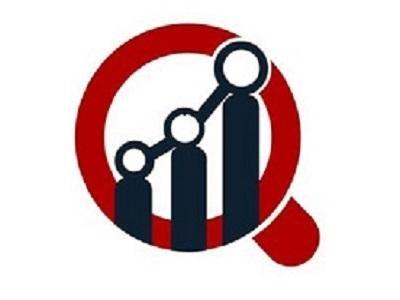“Europe Automobile Industry Market Forecast: Steering Toward a Smarter Future”

The landscape for the European automobile industry is undergoing a dramatic transformation—and the freshly released Europe Automobile Industry Market Forecast captures the essential shifts shaping the next decade. From electrification to digital services, from changing consumer behaviour to regulatory evolution, automotive stakeholders in Europe must adapt to secure growth and relevance.
Evolving Powertrains and the Electric Surge
One of the most striking developments in Europe’s auto industry is the rapid surge in electric and hybrid vehicles. As stricter emissions regulations become the norm, manufacturers are investing heavily in battery‑electric vehicles (BEVs), plug‑in hybrids (PHEVs) and even hydrogen fuel‑cell vehicles in niche segments. Traditional internal‑combustion engine (ICE) models are being phased out or significantly re‑engineered for efficiency. This transition is not simply about swapping the powertrain—it redefines manufacturing, supply chains, component sourcing (e.g., batteries, electric motors), and even after‑sales networks.
As a result, the market forecast emphasises that players who can deliver scalable EV platforms, rapid charging capability, and intelligent vehicle software will dominate. The shift toward autonomy, connectivity and over‑the‑air (OTA) updates further underscores how cars in Europe are increasingly becoming mobile technology platforms rather than conventional transport machines.
Consumer Preferences & Mobility Models
European consumers are no longer just buying cars—they are considering mobility solutions. Urbanisation, younger demographics, and changing lifestyle preferences mean that private ownership is being complemented (and sometimes replaced) by shared mobility, subscription models and multimodal transportation. Automakers and mobility service providers are therefore collaborating to offer vehicle‑as‑a‑service, ride‑hailing compatible models, and connected mobility ecosystems.
In this context, cars need to appeal not only on performance and design, but on connectivity, in‑vehicle services, ease of software updates and seamless integration with mobile apps and digital platforms. Manufacturers that neglect this dimension risk losing relevance, especially with younger buyers who expect smart features and eco‑conscious choices.
Supply Chain & Manufacturing Transformation
The European automotive manufacturing ecosystem is also under transformation. Electrification means new suppliers (battery gigafactories, power electronics, specialised semiconductor providers) and a re‑localisation of component production. Traditional OEM tiers are being reworked to accommodate software integration, advanced driver‑assistance systems (ADAS), sensor suites and autonomous driving capability.
From a forecast perspective, regions within Europe are seeing different trajectories—while Western Europe remains a leader in EV adoption and advanced architecture, Eastern Europe is emerging as a manufacturing hub thanks to labour arbitrage, government incentives and increasing investment in supply‑chain infrastructure. The report highlights that countries strengthening their EV manufacturing capabilities, charging infrastructure and grid readiness will attract investment and automotive production growth.
Regulatory & Environmental Imperatives
Europe’s regulatory environment is among the most advanced globally. Stricter CO₂ targets, zero‑emissions zones in cities, subsidies for EV purchases, and penalties for non‑compliance are forcing industry-wide change. Compliance is not optional—much of the forecasted growth depends on manufacturers meeting regulatory requirements while maintaining profitability.
Another major theme is sustainability beyond tail‑pipe emissions: lifecycle analysis of vehicles, recycled materials in production, carbon‑neutral manufacturing, and circular economy models. Consumers are increasingly aware of ethical production and green credentials, so automakers will need to not only build electric vehicles but also demonstrate sustainable manufacturing and supply‑chain practices.
Market Segments & Growth Hotspots
The automotive market in Europe is segmented by vehicle type (passenger cars, light commercial vehicles, heavy trucks), propulsion (ICE, hybrid, electric), and region (Western Europe, Eastern Europe, Nordic countries, Southern Europe). Among these:
-
Passenger EVs and PHEVs are set to see the fastest growth, driven by consumer demand and regulatory pressure.
-
Light commercial electric vehicles (e‑LCVs) are growing too, driven by last‑mile delivery and e‑commerce logistics.
-
Heavy vehicles remain more dependent on diesel currently, but hydrogen and electrification are emerging forces in bus and truck segments.
Geographically, Western Europe remains the innovation leader and primary market for premium EVs and advanced architecture. Eastern and Central Europe are catching up as manufacturing hubs and parts‑suppliers. Southern Europe and the Nordic region each have their niches—Southern for cost‑competitive production and electrification rollout; Nordic for early adoption, sustainability leadership and EV‑friendly policies.
Strategic Implications for Stakeholders
For OEMs and tier‑1 suppliers: The focus has to shift from mechanical hardware to software, digital services and energy systems. Companies need agile platforms that can support multiple powertrains, modular architectures and over‑the‑air updates. Partnerships with tech firms, battery makers, infrastructure providers and mobility services will become essential.
For aftermarket and service providers: With EVs, service models are changing—less maintenance of ICE components but more focus on software, battery health diagnostics and charging. Opportunities for telemetry, predictive maintenance and subscription models are growing.
For investors and startups: The European auto market offers opportunities in battery tech, EV charging infrastructure, vehicle software/firmware, connectivity platforms and mobility services. The winners will be those that align with macro‑trends and regulatory momentum.
Challenges & Watch‑points
Despite the optimism, there are challenges. Transitioning large fleets from ICE to electric requires charging infrastructure, grid readiness and consumer acceptance. Price competitiveness of EVs remains critical. Component supply chains (notably semiconductors and batteries) remain volatile. Workforce reskilling, regulatory complexity and technology standardisation are ongoing hurdles.
Looking to the Horizon
In summary, the European automobile industry is heading into a new era defined by electrification, digitalisation and sustainability. The forecast is bullish—growth will come not just from traditional vehicle sales, but from mobility services, connected vehicles, and energy‑efficient transportation systems. For those who invest in technology, adapt business models, and anticipate consumer and regulatory changes, the next chapter offers enormous opportunity. The road forward is not just about cars—it’s about mobility redefined for Europe’s future.
More Related Report
Automotive Automatic Transmission System Market Size
Automotive Low Emission Vehicle Market Size
- Art
- Causes
- Crafts
- Dance
- Drinks
- Film
- Fitness
- Food
- Giochi
- Gardening
- Health
- Home
- Literature
- Music
- Networking
- Altre informazioni
- Party
- Religion
- Shopping
- Sports
- Theater
- Wellness


